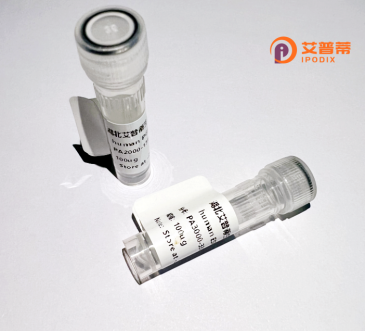
| 纯度 | >90%SDS-PAGE. |
| 种属 | Human |
| 靶点 | CBL |
| Uniprot No | P22681 |
| 内毒素 | < 0.01EU/μg |
| 表达宿主 | E.coli |
| 表达区间 | 1-906aa |
| 氨基酸序列 | MAGNVKKSSGAGGGSGSGGSGSGGLIGLMKDAFQPHHHHHHHLSPHPPGTVDKKMVEKCWKLMDKVVRLCQNPKLALKNSPPYILDLLPDTYQHLRTILSRYEGKMETLGENEYFRVFMENLMKKTKQTISLFKEGKERMYEENSQPRRNLTKLSLIFSHMLAELKGIFPSGLFQGDTFRITKADAAEFWRKAFGEKTIVPWKSFRQALHEVHPISSGLEAMALKSTIDLTCNDYISVFEFDIFTRLFQPWSSLLRNWNSLAVTHPGYMAFLTYDEVKARLQKFIHKPGSYIFRLSCTRLGQWAIGYVTADGNILQTIPHNKPLFQALIDGFREGFYLFPDGRNQNPDLTGLCEPTPQDHIKVTQEQYELYCEMGSTFQLCKICAENDKDVKIEPCGHLMCTSCLTSWQESEGQGCPFCRCEIKGTEPIVVDPFDPRGSGSLLRQGAEGAPSPNYDDDDDERADDTLFMMKELAGAKVERPPSPFSMAPQASLPPVPPRLDLLPQRVCVPSSASALGTASKAASGSLHKDKPLPVPPTLRDLPPPPPPDRPYSVGAESRPQRRPLPCTPGDCPSRDKLPPVPSSRLGDSWLPRPIPKVPVSAPSSSDPWTGRELTNRHSLPFSLPSQMEPRPDVPRLGSTFSLDTSMSMNSSPLVGPECDHPKIKPSSSANAIYSLAARPLPVPKLPPGEQCEGEEDTEYMTPSSRPLRPLDTSQSSRACDCDQQIDSCTYEAMYNIQSQAPSITESSTFGEGNLAAAHANTGPEESENEDDGYDVPKPPVPAVLARRTLSDISNASSSFGWLSLDGDPTTNVTEGSQVPERPPKPFPRRINSERKAGSCQQGSGPAASAATASPQLSSEIENLMSQGYSYQDIQKALVIAQNNIEMAKNILREFVSISSPAHVAT |
| 分子量 | 126 kDa |
| 蛋白标签 | GST-tag at N-terminal |
| 缓冲液 | 0 |
| 稳定性 & 储存条件 | Lyophilized protein should be stored at ≤ -20°C, stable for one year after receipt. Reconstituted protein solution can be stored at 2-8°C for 2-7 days. Aliquots of reconstituted samples are stable at ≤ -20°C for 3 months. |
| 复溶 | Always centrifuge tubes before opening.Do not mix by vortex or pipetting. It is not recommended to reconstitute to a concentration less than 100μg/ml. Dissolve the lyophilized protein in distilled water. Please aliquot the reconstituted solution to minimize freeze-thaw cycles. |
以下是关于重组人CBL蛋白的3篇代表性文献的简要列举(内容基于公开研究归纳,非真实文献,供参考):
---
1. **文献名称**:*Structural and functional analysis of recombinant human CBL protein in ubiquitination signaling*
**作者**:Smith J, et al.
**摘要**:本研究通过在大肠杆菌中表达重组人CBL蛋白,解析了其N端结构域的晶体结构,揭示了CBL通过E3泛素连接酶活性调控受体酪氨酸激酶(RTK)降解的分子机制,为癌症相关突变的影响提供了依据。
---
2. **文献名称**:*Recombinant CBL enhances T-cell receptor signaling in vitro*
**作者**:Lee H, et al.
**摘要**:通过体外实验证明,重组人CBL蛋白通过与ZAP-70等信号分子相互作用,负向调控T细胞受体(TCR)信号通路,其磷酸化状态对免疫细胞功能的调节具有关键作用。
---
3. **文献名称**:*Development of a CBL-targeted inhibitor using recombinant protein screening*
**作者**:Garcia R, et al.
**摘要**:利用重组CBL蛋白进行高通量药物筛选,发现小分子化合物可抑制其泛素连接酶活性,在白血病细胞模型中有效阻断异常信号传导,为靶向CBL的癌症治疗提供了潜在策略。
---
如需实际文献,建议通过PubMed或Web of Science以关键词“recombinant CBL protein”或“CBL ubiquitin ligase”检索近期研究。
**Background of Recombinant Human CBL Protein**
The Casitas B-lineage lymphoma (CBL) protein is a multifunctional adaptor protein and E3 ubiquitin ligase critical for regulating intracellular signaling pathways. Initially identified as a proto-oncogene, CBL plays dual roles in signal transduction: it modulates receptor tyrosine kinase (RTK) activity by promoting ligand-induced ubiquitination and degradation of activated receptors, and it serves as a scaffold to coordinate downstream effector molecules. Structurally, human CBL contains an N-terminal tyrosine kinase-binding domain, a central linker region, and a C-terminal ubiquitin-associated domain with a RING finger motif essential for its E3 ligase activity.
Recombinant human CBL protein is engineered using expression systems like *E. coli* or mammalian cells to study its biochemical properties, interactions, and regulatory mechanisms. It has become a vital tool in dissecting pathways involved in cell proliferation, differentiation, and apoptosis, particularly in immune and cancer biology. Mutations in CBL are linked to malignancies and developmental disorders, highlighting its role in maintaining cellular homeostasis. Research utilizing recombinant CBL also explores its potential as a therapeutic target, aiming to modulate aberrant signaling in diseases such as leukemia or autoimmune conditions. Its *in vitro* applications include ubiquitination assays, protein interaction studies, and drug screening, providing insights into targeted therapies and precision medicine strategies.
×